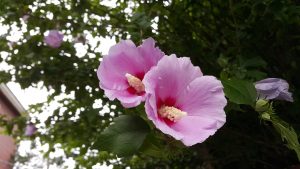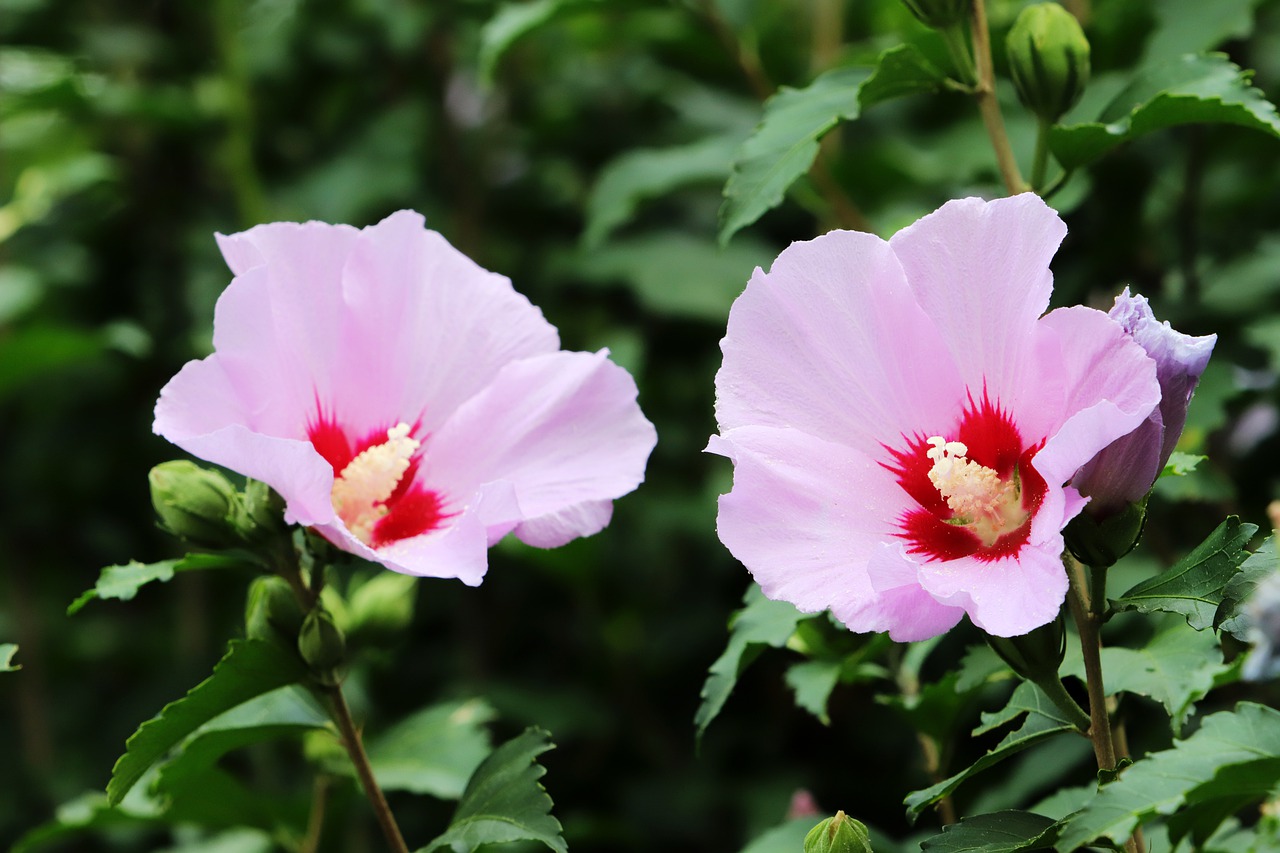Last Updated on February 15, 2022 by Real Men Sow
Hibiscus Syriacus is also known as Rose of Sharon or Rose Mallow in the UK. It can grow to 3.5m / 11.ft high and 2.5m/ 7ft wide. This makes it ideal for small gardens, but great for larger plots. It will take care of itself if it is in the right position. However, it appreciates some pruning once it has flowered to maintain the desired size and encourage the growth of the best flowers the following year.

Where To Plant Hibiscus Syriacus
The plant requires full sun, but soil conditions are less important. Although it can grow on any soil, from clay to light soils, waterlogged conditions are not ideal for this shrub.
It is frost-resistant in all areas of the UK once it has been established and can withstand very cold temperatures during the winter
Flowering and Foliage
All varieties of hibiscus Syriacus flowers late in the season. They usually flower around August. The flowering period typically lasts about three weeks. If the weather is dry and warm, it may take slightly longer. It is obvious that each flower only lasts a few days, but that so many flowers are produced during the flowering period that the entire plant seems to be covered in colour every day.
This shrub is multi-stemmed in its natural state and the stems extend from the ground. It does not require any training other than a once-a-year prune to keep its shape. The outer branches can begin to fall under the weight of the foliage if they are not pruned.
Hibiscus syriacus, which is a late-flowering shrub, also produces foliage late. It usually begins to bloom in May. The leaves are dark green and measure 8cm/3in in width by 3in long. It looks ordinary, and many people are surprised by the beauty of its flowers.
The shrub can produce seeds freely, and if planted in a well-tended flower bed, the seeds will germinate and grow in the spring. They will need to be weeded, but this isn’t a problem in the UK as it is much easier than in other countries.
Pruning Hibiscus Syriacus
This shrub should be left alone for the first three years. Once the shrub has grown to a height of 1.5m / 5ft, it is best to prune it once a year after the flowers have finished. This time around is usually in September. Pruning is limited to maintaining the shrub’s correct size and shape. The flower buds are formed from the current year’s growth, so there is no need to use any special techniques. Good air circulation can be maintained by trimming the older branches.
It is possible to grow a single-stem hibiscus. You will get a plant that is similar to a rose, but with a bigger head when fully grown. If you start with a plant that is two to three years old, the process will take between three and four years. It is best to do the following steps in the spring, when the plant structure is clear and unobstructed by foliage.
How To Prune Hibiscus Syriacus Step-by-Step
STEP 1
As close to the centre of the stem as possible, choose a straight and strong-growing stem. This can be marked with chalk or something similar to indicate that this stem is yours to keep.
STEP 2
All other stems that extend from the base of your plant should be cut to the ground. You will have one main stem.
STEP 3
Only trim the side shoots that are growing from the stem’s bottom third. Use a pair of sharp secateurs to trim the side shoots as closely as possible to the stem. All other side shoots should be left attached to the stem. They will give the shrub some leaves.
STEP 4
It depends on how tall you want your plant to be and what size you need it to grow, for staking to be required.
STEP 5
Next spring, repeat steps 1 through 3. The base might have new stems that should be cut to the ground. You will need to trim the side shoots at the bottom third of your stem as the main stem will be taller.
STEP 6
Side branches at the top of the tree will be the main bulk. These should be lightly pruned so that stems that are not growing upwards can be removed. Reduce by half the height of any side shoots that have reached below the top branches.
STEP 7
You can repeat the process every spring until your shrub reaches the desired height.
STEP 8
Now you should have one stemmed shrub with a clearly defined head. You should now choose four stems that are strong and healthy, and remove the rest. All side shoots below the head must be removed. Remove any stems that grow from the base or side shoots that sprout from the stem below the head in the following years..

